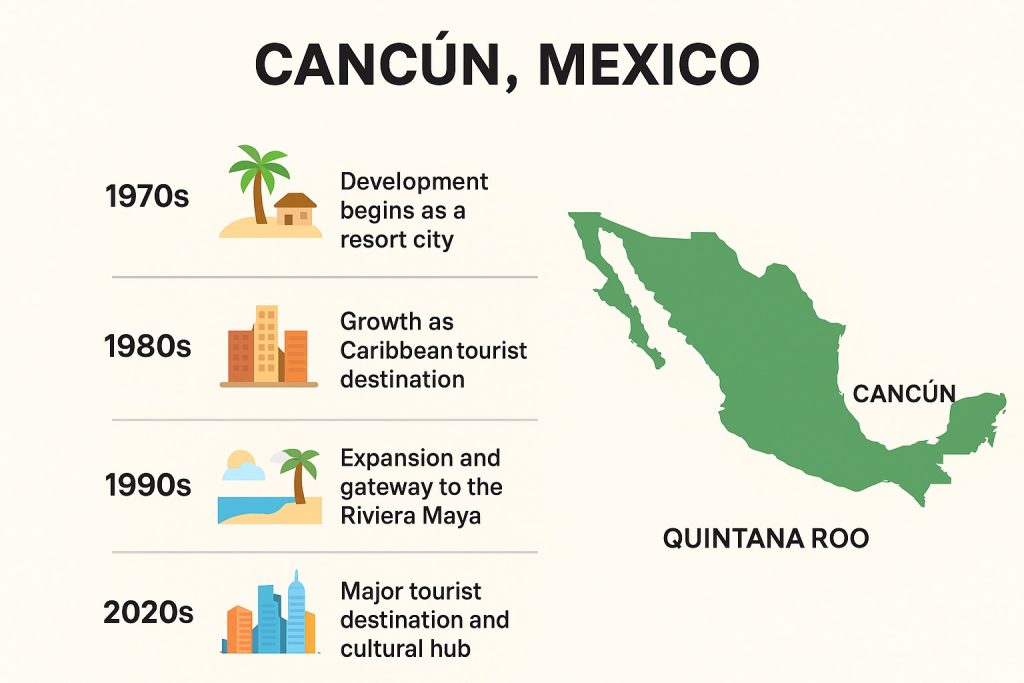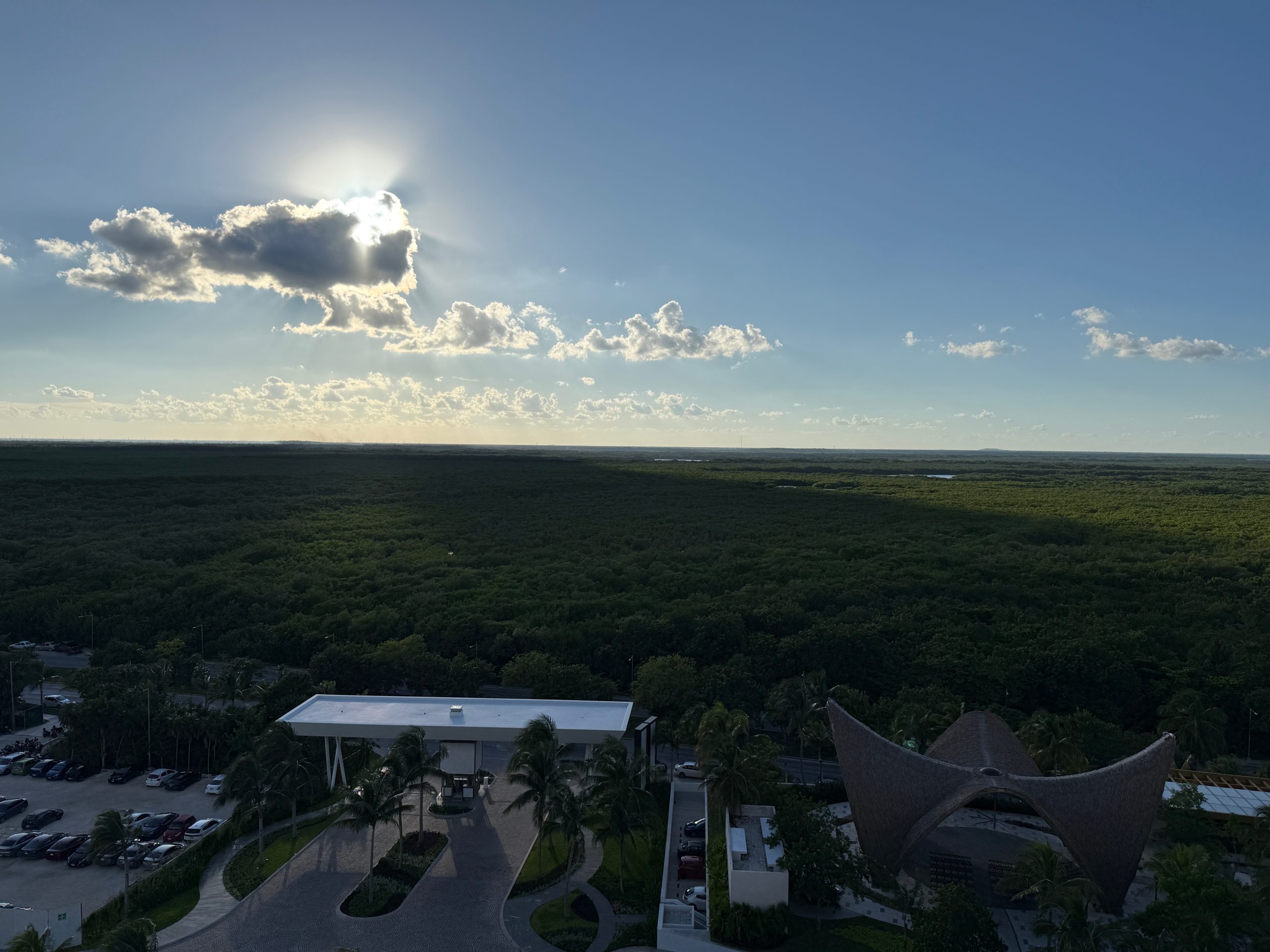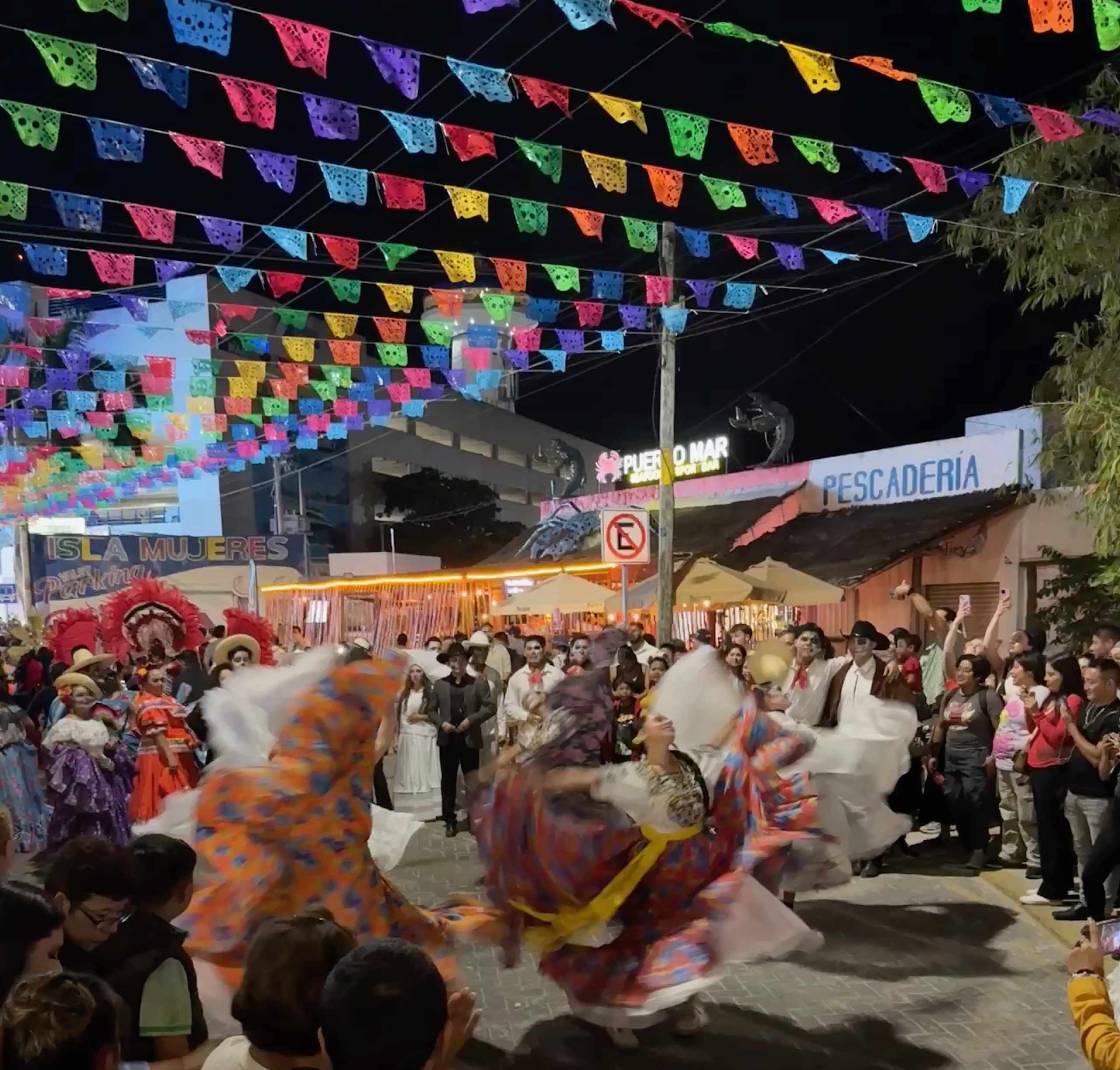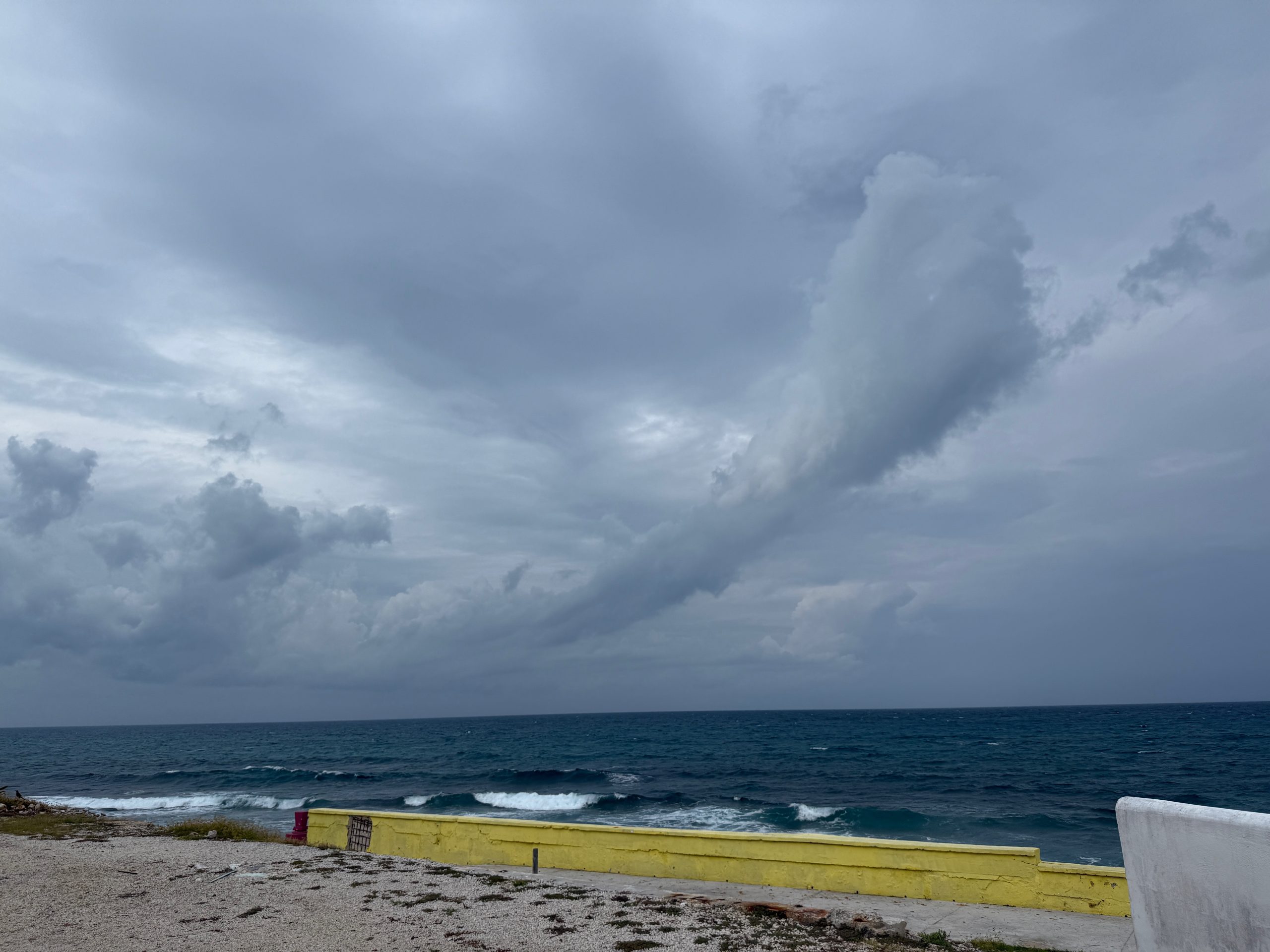Cancún, Mexico, has a fascinating history. One that goes from being a sparsely inhabited stretch of jungle and beach to becoming one of the world’s most famous resort destinations in just a few decades. Here’s an overview of its story and development:
Pre-Columbian and Early History
• Maya Civilization (Before 1500 CE):
• The region around Cancún was originally inhabited by the Maya people.
• It wasn’t a major city like Chichén Itzá or Tulum, but the area had small Maya settlements and served as a trade route along the Caribbean coast.
• Archaeological sites such as El Rey, Yamil Lu’um, and San Miguelito within Cancún’s hotel zone date back to this period.
• The Maya called the area Nizuc, meaning “point of grass” or “promontory.”
• Spanish Colonial Period (1500s–1800s):
• The Spanish arrived in the 16th century, but this coastal region remained isolated and sparsely populated due to dense jungle, disease, and limited economic value.
• The Maya population persisted in small fishing and farming communities, and some resisted Spanish control well into the 19th century, especially during the Caste War of Yucatán (1847–1901).
The Birth of Modern Cancún (1960s–1970s)
• In the 1960s, the Mexican government began planning to boost tourism to stimulate the economy.
• In 1969, a group of economists and urban planners from Banco de México identified several potential locations for a new resort city. Cancún, then a nearly uninhabited sandbar with only a few families was chosen for its natural beauty and accessibility.
• Around 1970, construction officially began. At that time, only about three caretakers and a handful of coconut farmers lived there.
• The name Cancún is believed to come from a Maya term meaning “nest of snakes” (Kan Kun).
Development and Growth
• 1970s–1980s:
• The government built the first hotels, roads, and the Cancún International Airport (opened in 1974).
• The Hotel Zone (Zona Hotelera) was developed on the barrier island, and the mainland area became Ciudad Cancún, where most residents live.
• Tourism grew rapidly, first from North America, then globally.
• 1990s–2000s:
• Cancún became one of the most visited destinations in the Caribbean, famous for its beaches, nightlife, and resorts.
• The city continued to expand, and infrastructure was improved to accommodate millions of visitors each year.
• It also became the gateway to the Riviera Maya, a stretch of coast with other resort towns like Playa del Carmen and Tulum.
Challenges and Resilience
• Cancún has faced several natural disasters, particularly hurricanes. Notably Hurricane Gilbert (1988) and Hurricane Wilma (2005) which caused major damage but also led to rebuilding and modernization.
• Rapid urban growth has brought environmental and social challenges, including issues with water resources, waste management, and housing for local workers.
• Nevertheless, Cancún has remained a symbol of modern Mexican tourism success.
Cancún Today
• As of the 2020s, Cancún hosts millions of visitors annually and contributes significantly to Mexico’s tourism income.
• It is part of the state of Quintana Roo, established in 1974.
• The area continues to grow, with ongoing investment in luxury resorts, ecotourism, and cultural preservation.
• Beyond beaches, Cancún serves as a gateway to Maya heritage, with easy access to sites like Chichén Itzá, Tulum, and Cobá.












